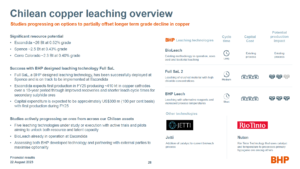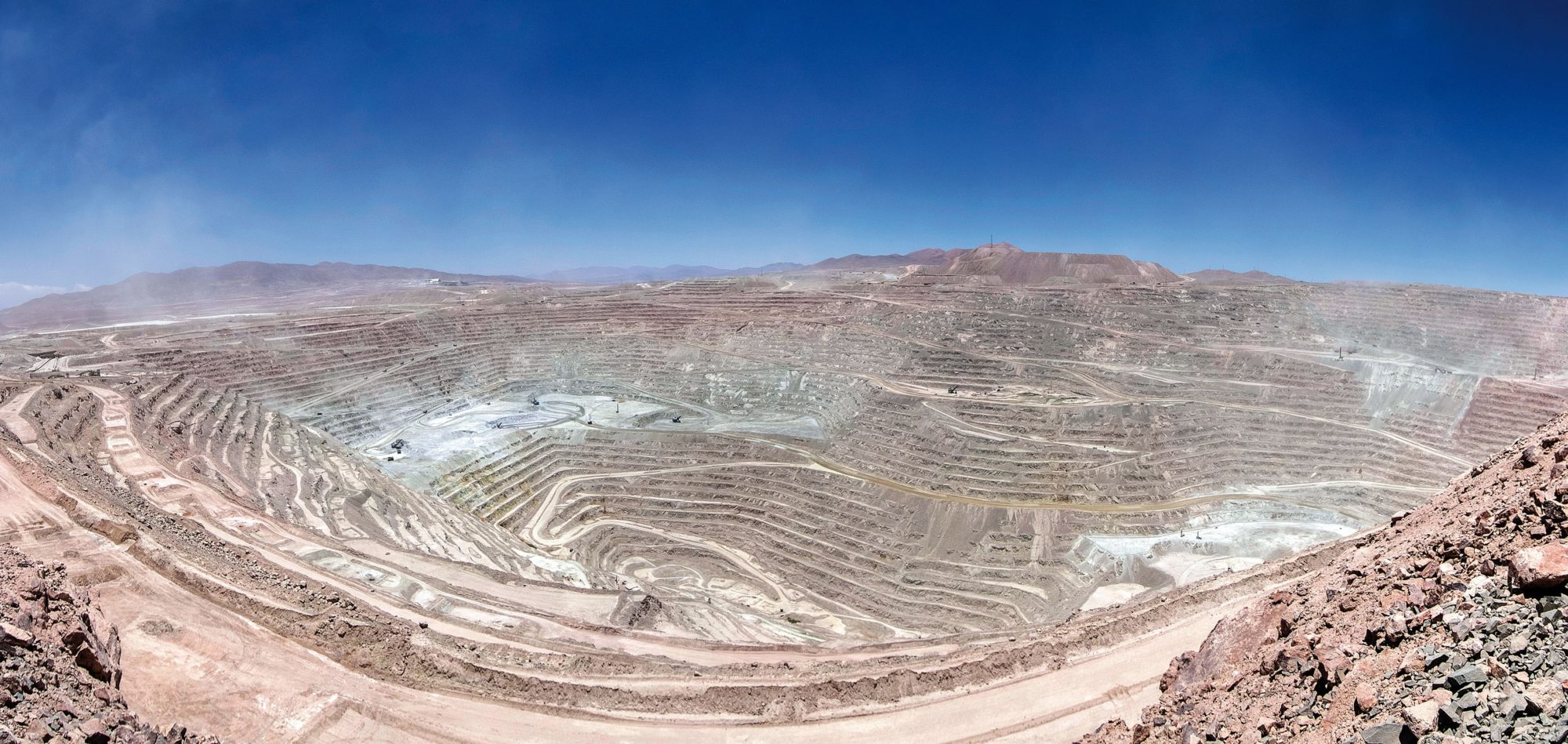The focus on copper leaching technology is very marked – and all the copper majors including Codelco, AMSA, Freeport, Glencore, Rio Tinto and BHP are looking at their own and third party solutions. In its financial results for the year ended 30 June 2023, BHP has outlined progress with what it calls its Full SaL technology, SaL standing for Simple Approach to Leaching.
Full SaL is an optimised BHP-designed leach process which has to potential to simplify operations into one leach process instead of having to use chemical leaching for oxide ores and bioleaching for sulphides via the addition of salt ie sodium chloride bringing increased metal recoveries and faster leach kinetics. This has been in development for a number of years with the project kicking off as far back as 2015 but is really now gathering pace.

Over the next 18 months, the BHP-operated and 57.5% owned Escondida copper mine in Chile will complete a number of strategic studies into options to offset the impact in the decline of concentrator feed grade which is expected from FY27. These options include the potential for a new concentrator to replace the current Los Colorados facility and the application of one or more leaching technologies to improve recoveries and unlock primary sulphide resources in the cathode process.
BHP expects costs associated with the studies, which are captured as operating costs, to increase to ~US$140 million per year in both FY24 and FY25, from ~US$60 million in FY23. Full SaL is on track to become the first of these options to be implemented. The technology has already been successfully deployed at Spence, and is expected to produce ~410,000 t in copper cathodes at Escondida over a 10 year period once implemented, through improved recoveries and shorter leach cycle times. BHP expects capital expenditure to implement Full SaL to be approximately US$300 million, and for first production to be during FY25.
Escondida is not the only operation to have an ongoing leaching technology focus. During FY23 BHP applied for environmental approval to extend the life of its Spence leaching facilities to 2039, also in Chile. If approved, this would involve the implementation of a novel approach to re-processing previously leached ores followed by a planned medium-term transition to chalcopyrite ore leaching.
Cerro Colorado is transitioning to closure by December 2023. Operating costs at Cerro Colorado are expected to be approximately US$70 million and US$45 million for the December 2023 and June 2024 half years, respectively. But BHP is also exploring options to extend the life of Cerro Colorado, including through the use of leaching technologies and desalinated water, which could see the operation restart in approximately 2030, subject to environmental approvals.
Altogether BHP has no less than five leaching technologies under study or execution, with trials aiming to unlock both resource and latent capacity. These include its own BioLeach technology that uses acid and bacterial leaching and which is already in use at Escondida, Full SaL, so-called BHP Leach with alternative reagents and increased process temperatures; then two third party technologies – Jetti Resources’ catalytic leaching, in which BHP is an investor via BHP Ventures; and the Rio Tinto-owned Nuton venture, an elevated temperature bioleaching. Rio Tinto owns 30% of Escondida.











